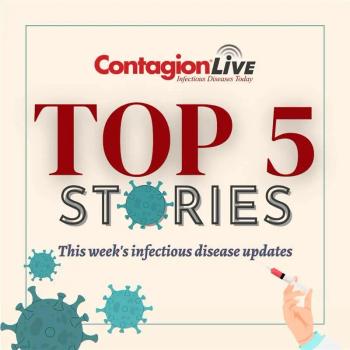
Trimethoprim/Sulfamethoxazole and Minocycline Show Comparable Outcomes in Stenotrophomonas maltophilia Pneumonia
At MAD-ID 2025, Kimberly Leuthner, PharmD, FIDSA, highlights the need for larger prospective studies amid limited current evidence.
A retrospective single-center chart review presented at MAD-ID 2025 by Kimberly Leuthner, PharmD, FIDSA, evaluated the use of trimethoprim/sulfamethoxazole (TMP/SMX) versus minocycline for the treatment of Stenotrophomonas maltophilia pneumonia and found no difference in clinical outcomes between the two antibiotics.
The study, conducted at Sunrise Hospital and University Medical Center of Southern Nevada, included adult patients with respiratory cultures growing only S maltophilia. To qualify, patients had to have radiographic evidence of pneumonia and at least three clinical criteria such as purulent sputum, worsening respiratory status, temperature abnormalities, leukocytosis/leukopenia, or more than 15% immature neutrophils. Eligible patients received either TMP/SMX or minocycline within 48 hours of positive culture for a minimum of 72 hours. Patients were excluded if treated with other antibiotics active against S. maltophilia or if treatment began before cultures were obtained.
Of 111 patients identified with S maltophilia respiratory cultures, 39 (35%) were excluded for receiving no treatment targeting S maltophilia. An additional 62 (55.9%) were excluded primarily because they were not treated with either study drug (27/62, 43.5%) or lacked radiographic evidence of pneumonia (16/62, 25.8%). Ten patients met all inclusion criteria and were enrolled, three treated with TMP/SMX and seven with minocycline. Baseline characteristics were similar between groups.
The primary outcome measured was improvement in at least two clinical signs within 72 hours of treatment initiation. This was observed in one patient (33%) receiving TMP/SMX and three patients (43%) receiving minocycline, with no statistically significant difference (P = 1). Secondary outcomes including clinical response at the end of therapy, 30-day all-cause mortality, and microbiologic eradication showed no differences between groups. Overall, the clinical success rate was low in both treatment arms.
Leuthner explained the motivation behind evaluating minocycline as an alternative therapy. "We’ve been a fan of using minocycline for Steno for the last probably 15 years or so. Unfortunately, our population seems to have a high number of patients that are allergic to Bactrim, and so we had to find some alternative options in those patients. We have done some previous research looking at whether or not this would be a reasonable option. Unfortunately, studies are extremely limited, so we wanted to see what we could do about getting more literature out there to show the use of minocycline."
Regarding the small sample size, Leuthner noted, "We realized that our inclusion criteria was going to result in a very small population, mostly due to the fact we applied prospective criteria to a retrospective study. But we were trying to ensure that we focused on Steno specifically, since that’s the population that really has not been studied. I don’t think that there is going to be a huge clinical impact with this, but hopefully it’s going to be the starting point for people to discuss whether or not monotherapy is still a reasonable option, since our patients did do reasonably well with either drug, versus whether more prospective randomized trials need to be done, which may be a bit complicated."
She also discussed the challenges of strict diagnostic and treatment criteria in retrospective studies: "So unfortunately, retrospective data is retrospective data. You’re stuck with what the doctors document and the information that’s available. That limited our application so much because if the doctors didn’t write it, we did not make the assumption it was there. And so it limited the number that we use. But what we’re hoping for is that people will see that this is a possibility of using the newer criteria for prospective studies and potentially develop discussions between multiple collaborations to try and set up a prospective study. This is not a very common organism at all, and so to get the data that we truly need is going to require collaboration from multiple places."
Reference
Leuthner K, Jinings T. Trimethoprim/Sulfamethoxazole vs Minocycline for Stenotrophomonas maltophilia. Abstract 99 OR. MAD-ID Meeting. May 28–31, 2025. Orlando, FL.
Newsletter
Stay ahead of emerging infectious disease threats with expert insights and breaking research. Subscribe now to get updates delivered straight to your inbox.

















































































































































































































































































